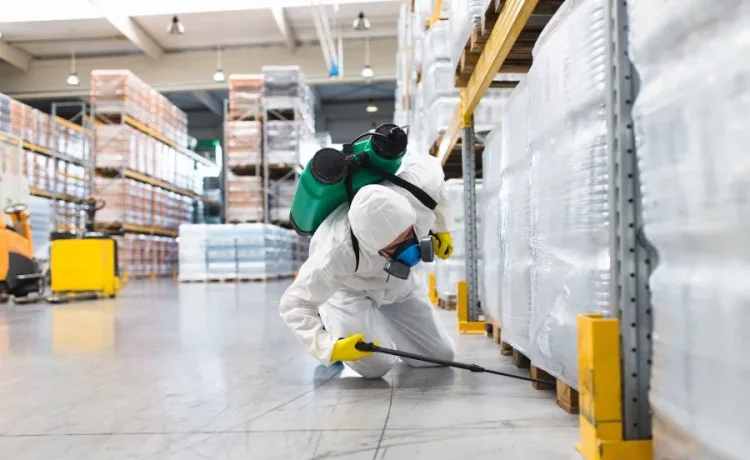When you think about what could harm your business, pests might not be the first threat that comes to mind. But pest infestations in commercial spaces can lead to health code violations, damage to property, lost customers, and even legal trouble. Whether you manage a restaurant, warehouse, office, or retail space, pest prevention isn’t optional—it’s essential.
In this post, we’ll explore why pests are such a serious issue for businesses, which industries are most vulnerable, and how you can create a pest management strategy that protects your employees, your customers, and your bottom line.
Why Commercial Pest Control Matters
A pest infestation in a commercial setting is more than a nuisance—it’s a risk to your reputation and operations. Here’s why:
- Health and Safety Concerns: Pests like rodents, cockroaches, and flies can carry bacteria and diseases that put your staff and customers at risk.
- Property and Equipment Damage: Rodents chew through electrical wires, boxes, and insulation. Termites can weaken structural integrity.
- Lost Revenue: Customers who see pests in your establishment are unlikely to return—and they may leave negative reviews.
- Regulatory Violations: Certain industries, especially food service and healthcare, must adhere to strict sanitation standards. A pest problem can lead to failed inspections or even closure.
High-Risk Industries for Pest Infestations
Some businesses are naturally more attractive to pests based on their layout, food storage practices, or foot traffic.
1. Restaurants and Food Service
Food, grease, and moisture are major attractants for cockroaches, flies, and rodents. Even a small spill can invite a big problem.
2. Warehouses and Distribution Centers
Large, open spaces with high shelving and cardboard boxes create ideal nesting environments. These facilities often face rodent issues.
3. Retail Stores
Especially those that sell food or clothing. Clothing stores can suffer from moths, while convenience stores may battle flies, ants, or mice.
4. Office Buildings
Break rooms, bathrooms, and HVAC systems can harbor pests if not properly maintained.
5. Hotels and Hospitality
Bed bugs are a particular threat in hotels. One guest complaint can snowball into a PR nightmare if not handled quickly.
Common Commercial Pests to Watch For
- Rodents (Mice and Rats): Gnawing, nesting, and contaminating food are their specialties.
- Cockroaches: Thrive in dark, damp areas and can spread harmful bacteria.
- Flies: Especially common around dumpsters and food prep areas.
- Ants: Often infiltrate buildings in search of food and water.
- Stored Product Pests (Weevils, Moths): A threat to any business that stores food or dry goods.
- Bed Bugs: A major issue in hotels, hostels, and sometimes even offices.
Key Steps to Keep Your Business Pest-Free
A successful pest prevention plan combines cleanliness, awareness, and professional oversight. Here’s how to build one:
1. Conduct a Thorough Inspection
Start by walking your facility and identifying vulnerable areas:
- Cracks and gaps in doors, windows, or walls
- Break rooms and food storage areas
- Waste disposal zones
- Utility lines and ventilation systems
A licensed pest control professional can assist with a full risk assessment.
2. Seal Entry Points
Pests don’t need much space to sneak in. Mice can squeeze through holes the size of a dime.
- Seal cracks in walls and floors
- Install door sweeps
- Repair torn screens and weather stripping
- Screen vents and drains
3. Maintain Cleanliness and Sanitation
Regular, thorough cleaning reduces attractants:
- Clean up spills and crumbs promptly
- Empty trash regularly and use sealed containers
- Sanitize food prep surfaces and break rooms
- Clean under appliances and storage shelves
Don’t forget less obvious areas like floor drains, mop closets, and dumpsters.
4. Train Your Staff
Your team is your first line of defense. Make sure they know:
- How to spot signs of pests
- The importance of keeping their workspaces clean
- Who to report pest sightings to
In food service environments, training is especially important for preventing violations and contamination.
5. Partner with a Professional Pest Control Company
Working with a trusted pest management provider gives your business access to:
- Scheduled inspections and monitoring
- Targeted treatments tailored to your industry
- Documentation and reporting for regulatory compliance
- Emergency response if an issue arises
An experienced commercial pest control company will understand your unique risks and help you create a plan that fits your space, schedule, and safety requirements.
What to Do If You Spot a Pest
If you or an employee sees a pest:
- Don’t ignore it. One sighting can indicate a much larger hidden problem.
- Log the incident—time, place, and what was seen.
- Contact your pest management provider immediately.
- Take immediate sanitation steps to limit spread.
- Inform staff so they can be on alert (especially in food service or customer-facing areas).
Final Thoughts
Pest control isn’t just for homes—it’s a critical part of protecting your business from costly disruptions, damaged reputation, and regulatory issues. Whether you run a small retail store or a large industrial facility, a proactive, professional pest management plan is one of the smartest investments you can make.
Don’t wait until pests become a problem. With the right strategy, you can prevent infestations, maintain a clean and safe environment, and keep your business running smoothly year-round. We recommend Positive Pest Management.


















